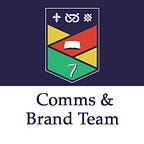Content control on a shoestring
Effective management and regular maintenance of content and links on the Keele University website is important in delivering a first-class user experience
In this blog we talk about how we audit the website for broken links, SEO, accessibility, and how to find certain strings of text.
Find broken links (404s)
We use a tool called ‘Screaming Frog SEO Spider’ to audit the website for broken links (403s, 404s, etc).
Once we’ve run an audit, we drop the results into a Google Sheet and share this information with our CMS Web Champions. The Google Sheet details the pages that contain broken links, the URL the link is trying to reach, and the hyperlink text — enough information for Web Champions to easily find and fix broken links on their pages.
A recent audit found over 1,000 pages on the University’s website with broken links (404s). After sharing this with Web Champions, we reduced this number by 203 pages by the next audit the following month!
We’ll run a report every few months, and share with all Web Champions. We’ll also run regular audits to find redirect chains, which we’ll fix within the Comms Team.
Analyse page titles and meta data
Whilst page titles and meta data may no longer influence where you appear on Google search results, it will affect the likelihood of a user clicking on the result.
A badly formatted title and page description will not be enticing for a user to click.
So in addition to writing captivating page titles and content, each page within the CMS has a metadata DC.description field available. This field can have up to 320 characters.
The text inputted into this field will be displayed on Google search results, and so is an important consideration for click through rates.
We’ll run a SEO Spider Audit for page titles and meta data monthly, and share via a Google Sheet to highlight pages that are missing this valuable information.
Content readability
Read our style guide for practical advice and guidance on creating and managing content on the Keele University website.
There are also free online test tools to measure the readability of content.
Finding strings of text
Sometimes, you will need to find certain strings of text on the website, or your locally owned pages. This might be to remove reference to a certain course, for example.
To search for text, a simple Google search can help. For example, the search term site:keele.ac.uk major/minor will find mentions of the term ‘major/minor’ on the University’s website.
You can also run this for your school pages by adding your URL. For example, the search site:keele.ac.uk/kms “Association of Chartered Certified Accountants” would bring back all mentions of ‘Association of Chartered Certified Accountants’ on the KMS school pages.
Once you have done this, the Communications Team can also run a server-side search to mop up any other mentions.
Spell checking
Checking your spellings can be done in most common text editors, but there is also a spell checker built into t4 CMS.
After entering your content, click on the spell check icon (the “123” icon with a tick) to view suggested corrections.
Note that this feature is only available on fields that have the full editor features available.
